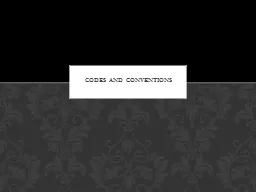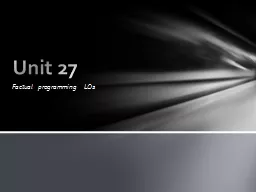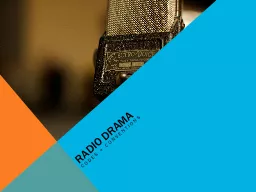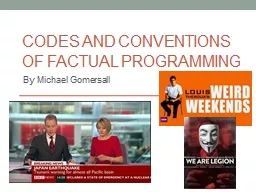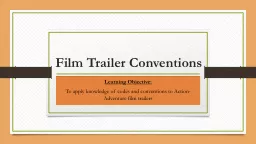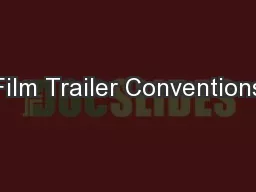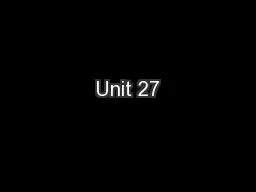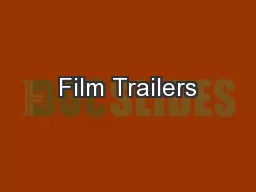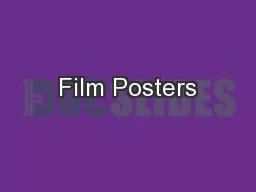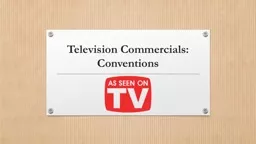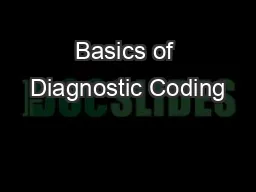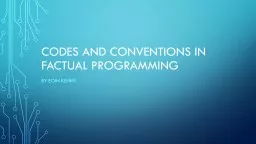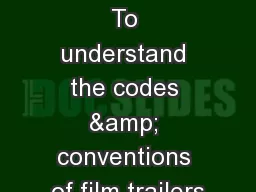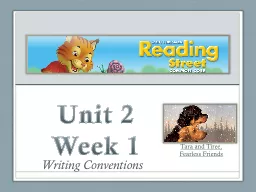PPT-Codes and Conventions
Author : celsa-spraggs | Published Date : 2016-06-06
In every news show there will be a main studio news reader This is the person who will introduce the news and each news story It is important to have one as this
Presentation Embed Code
Download Presentation
Download Presentation The PPT/PDF document "Codes and Conventions" is the property of its rightful owner. Permission is granted to download and print the materials on this website for personal, non-commercial use only, and to display it on your personal computer provided you do not modify the materials and that you retain all copyright notices contained in the materials. By downloading content from our website, you accept the terms of this agreement.
Codes and Conventions: Transcript
In every news show there will be a main studio news reader This is the person who will introduce the news and each news story It is important to have one as this person is the main speaker This person is often someone older and someone who will have had some experience in speaker publicly and presenting They will always be in the main news studio sat normally at a desk or table with either a pieces of paper with a brief description of what they need to say or a laptop The studio presenter will be dressed smart and can be either female or male One example of where the main news reader will speak was when Prince George was born The man who was in the studio was telling some facts about background history from previous events that may have been similar to this particular story The studio news reader also interviewed various different experts and people who were at the scene of the event Field reporters . A2 MEDIA EVALUATION. AREK STEPANIAN & ALEX MACLEAN. 1) In what ways does your media product use, develop or challenge the forms and conventions of real media products?. Choice of Genre. PSYCHOLOGICAL / THRILLER. Unit 27 . Documentary Formats . An expository documentary is a documentary that exposes a person or a topic. . The codes and conventions of an expository are:. A voice over . Rhetorical questions . Facts and figures . CODES + CONVENTIONS. W O R D S & . V O I C E . S. - BECAUSE THERE ARE NO VISUALS IN RADIO, THE IMPACT AND EMPHASIS OF THE SHOW IS RELIENT ON THE WORDS AND VOICES TO MAINTAIN THE LISTENERS ATTENTION. A STRONG SCRIPT IS KEY TO CREATING AN ENTICING DRAMA. . By Michael . Gomersall. Studio News Readers. ‘Anchor’ the show. Speak clearly. Formal presentation. . - What they wear. . - How they speak. Don’t show emotion. Not Biased. Talk directly to camera. Learning Objective:. T. o apply knowledge of codes and conventions to . Action-Adventure . film trailers. Analysing Trailers. Analyse the trailer for . Indiana Jones and the Kingdom of the Crystal Skulls. Learning Objective:. T. o apply knowledge of codes and conventions . to Rom-Com . film trailers. Analysing Trailers. Analyse the trailer for . P.S. I Love You. , . with each group focusing . on different aspects. Factual programming LO2 . Documentary Formats . E. xpository. An expository documentary is a documentary that exposes a person or a topic. . The codes and conventions of an expository are:. A voice over . To understand the codes & conventions of film trailers. you. Codes & . C. onventions . of . T. railers. What are the codes and conventions (typical features) of film trailers?. Create a checklist of features you expect to see or be told in every trailer.. To understand the codes & conventions of film posters. Codes & conventions. Codes. are the signs and symbols that create meaning (fonts, colours, images). Conventions. are the accepted way of presenting certain elements (names, dates, credits). Conventions of a Television . Commercial. When creating your . commercial, . there are lots of things that you need to consider and make choices about:. Form:. Narrative or Direct Address.. Style:. Humourous, Dramatic, Parodic (i.e. a parody of something else).. Chapter 12. . 1. History of Medical Coding. Medical coding began as medical classification in 17th-century England. League of Nations established in 1920. International List of Diseases. In 1946, the International Commission of the World Health Organization (WHO) established codes. By Eoin Kenny. What are codes and conventions. These are rules that media organisations must follow when making factual programmes.. Visual codes, for example, how the presenter looks, this will include that they must have a suit, shaved and neat haircut. They must have good communications skills, knowledge of the topic being reported and have a string sense of professional ethics.. you. Codes & . C. onventions . of . T. railers. What are the codes and conventions (typical features) of film trailers?. Create a checklist of features you expect to see or be told in every trailer.. Tara and . Tiree. , Fearless Friends . Day 1. Writing Conventions. Tara and . Tiree. , Fearless Friends . Common Nouns . Conventions. Conventions. Journals . Conventions. When playing outside one day, you find a hat that, when placed on your head, gives you magical powers. What kind of powers would it give you? What would you do with your powers? .
Download Document
Here is the link to download the presentation.
"Codes and Conventions"The content belongs to its owner. You may download and print it for personal use, without modification, and keep all copyright notices. By downloading, you agree to these terms.
Related Documents

